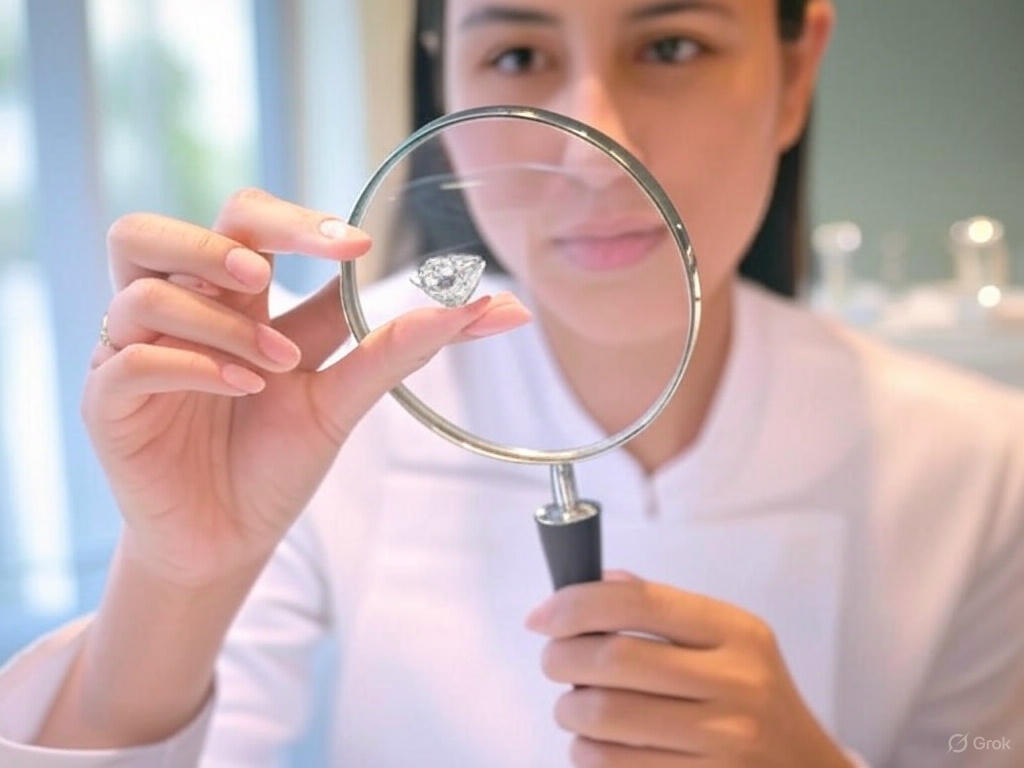Every sparkling diamond you see in a jewelry store has a story that began billions of years ago, deep within the Earth. But how does a rough, hidden stone become a polished gem set in a ring?
Let’s follow the incredible journey of a natural diamond — from mine to market.

🌋 1. Formation Deep Beneath the Earth
-
Timeframe: Over 1 to 3 billion years ago
-
Location: More than 100 miles underground
-
Conditions: Extreme heat and pressure cause carbon atoms to crystallize into diamond.
💡 These diamonds are pushed to the surface by ancient volcanic eruptions through kimberlite pipes — nature’s delivery system.
⛏️ 2. Mining: Extracting the Rough Diamond
There are two main types of mining:
-
Open-pit mining: Large surface-level mines.
-
Underground mining: Deep tunnels follow kimberlite pipes.
🌍 Countries known for diamond mining include:
-
Botswana
-
Russia
-
Canada
-
South Africa
-
Australia
Mining is regulated in most regions today, with increasing focus on ethical sourcing and environmental responsibility.
🔬 3. Sorting and Grading the Rough Stones
After extraction, diamonds are sorted by:
-
Size
-
Shape
-
Quality (clarity & color)
Only a small percentage are gem-quality. Others may be used in industrial tools due to their hardness.
At this stage, stones may go to a Diamond Trading Company (DTC), where they’re sold to manufacturers.
✨ 4. Cutting and Polishing: Revealing the Brilliance
This is the most skilled and delicate part of the journey.
-
Rough stones are analyzed using 3D modeling.
-
Expert cutters shape the diamond to maximize:
-
Brilliance
-
Fire
-
Value
-
Cuts include round, princess, emerald, pear, and more. A single wrong move can reduce a diamond’s value dramatically.
🧾 5. Certification and Grading
Once polished, diamonds go to gemological labs (e.g. GIA, IGI, AGS) for independent certification.
They receive a grading report with:
-
Carat
-
Cut
-
Color
-
Clarity
This report adds trust and transparency for buyers.
💍 6. Setting into Jewelry
After grading, diamonds are sold to retailers or designers, then:
-
Set into rings, necklaces, bracelets, or earrings
-
Paired with metals like gold or platinum
-
Customized for personal style or gifting
From here, it reaches you, the final destination in its billion-year journey.
🌱 7. Ethical and Sustainable Diamonds
Modern consumers care about where and how their diamonds are sourced. Look for:
-
Conflict-free certification (e.g. Kimberley Process)
-
Sustainable mining practices
-
Traceable origin diamonds
💡 Some retailers now offer blockchain-based tracking from mine to market for full transparency.
🔚 Final Thoughts
A natural diamond’s story is one of time, pressure, human skill, and emotional value. From volcanic depths to polished perfection, each one is a miracle of nature and craftsmanship.
💎 Want more insights? Explore our next guide on how to choose a trustworthy diamond jeweler — and what certificates really mean.


